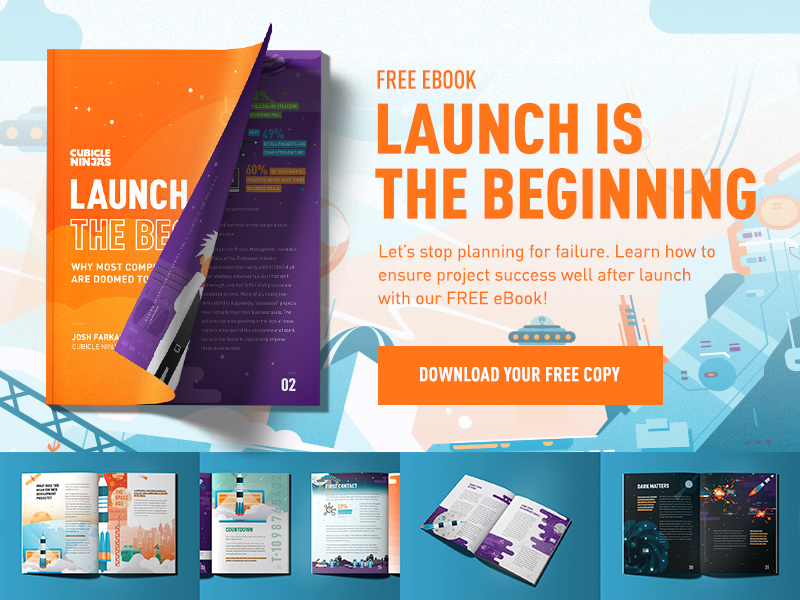
One of the hardest parts of building a company is choosing the perfect name. It’s all too easy to mess it up. We would give examples, except you probably wouldn’t recognize any of them- and for good reason!
A brand name can make or break your company, so it’s not a decision that can be taken lightly. Customers will either gravitate to and identify with you, or run as far as possible in the opposite direction – right into the arms of your competitors.
If that didn’t scare you, save yourself the time of reading this article and use a name-generating machine. For some, it can be that easy. But, in our opinion, it is absolutely worth the time to choose a proper, well thought out brand name.
We’re going to share with you the tips to identify a great brand name, how to brainstorm your perfect brand name, and how to ensure your customers think it’s just as good as you do. We’ll point you in all the right directions to make your journey to your dream brand name as easy as possible. Let’s begin!
How to Choose the Right Brand Name
What Makes a Good Brand Name?
We wish there was an equation that led to the perfect name, but there are too many nuances among too many variables to make that possible. Instead, we can give you values to aim for:
- Meaning: The meaning behind your name doesn’t have to be directly related to your product or service, although it can be. Meaning can be based on what’s meaningful to your customers, your industry, and/or your company. Ideally, customers should be able to identify what the meaning is and understand why your product or service would be called that.
- Uniqueness: The last thing you want is for your company to blend in! A unique name is important if you hope to be memorable to your customers. This is absolutely necessary to stand out from your competitors. You can aim for the shock factor, being clever, or being obvious. The uniqueness comes from the context of your industry and competitors.
- Approachability: Consider if your customers would be interested in learning more about your company after hearing its name. Part of this includes considering if it’s easy to spell and say out loud. This is important for word-of-mouth business and ensuring that people who want to look you up online can find you.
- Future oriented: You want your company to grow, so be sure that your name can grow with you. It should remain relevant and adaptable to your future plans. If you’re not sure what direction your company is going in, it’s okay to keep it vague.
- Visually appealing: While a name is critical to branding, it’s also important that the name can be easily communicated in designs like logos and icons. If it’s hard to make a design that is appealing to your target audience, that’s a serious red flag and you may want to discard the name idea.
After considering the above, the final question you should ask is: “Will this resonate with my customers?” This questions draws the absolute bottom line when it comes to name picking, because without customers, you don’t have a business- or at least a successful business.
How to Find the Perfect Name
Now that you know the makers of a great brand name, it’s time to apply your new knowledge. Here’s a step by step guide to your new brand name:
Identify Your Core Identity
You can’t name yourself without a solid understanding of who you are as a company and what your core values and goals are. This might be a big ask, so you may find it helpful to break this step down by identifying your vision, mission, and values – aka, why your company exists, what your company does, and how you do what you do. Overall, you’re looking to identify your purpose and how you fulfill it.
Brainstorm
Great brand names are often the products of great minds. It can be super useful to gather as many relevant minds as possible in one space. In the meeting, be sure to articulate the company’s core identity to them before beginning the session. You may want to consider a structured approach to brainstorming, as without any parameters it’s easy to get off track pretty quickly.
Here are some potential activities to use with your teams:
- Have everyone write down as many adjectives as you can think of that describe your identity and product or service
- Describe what you hope your customers feel during or after using your product or service
- Freely associate words that describe your product or service
- Use a thesaurus to comb through words associated with your product, service, or industry
If you’re interested in taking things a little further, consider narrowing down your brainstorming to a specific category of brand name. You could also try to come up with a word for every category to determine what type of name suits your company best, and then doing another brainstorming session exclusive to that category. Allow us to elaborate – here are the different categories of brand names:
- Founder: A name based on a person (real or fictional), e.g.: Betty Crocker
- Descriptive: A name that describes your product or service, e.g.: General Motors
- Fabricated: A word or name that is completely made-up, e.g.: Xerox
- Metaphor: A name that is foreign, imagery-oriented, or mythical in its description of a noun, e.g.: Nike
- Acronym: A name that’s an abbreviation, e.g.: DKNY
- Magic spell: A name that combines two words together or a word spelled differently than it should be, e.g.: FaceBook
At the end of this stage, you will (ideally) have a list of 15-20 names that can proceed to the next stage.
Make Sure Your Name is Available
This is usually the most disheartening part of choosing a brand name because many good ideas are shot down fairly quickly. However, if you enter this stage bearing this in mind it can soften the blow. Welcome to the part where you have to systematically eliminate names because some other company beat you to them. Grrrr.
Now, you’ll want to check for patents, trademarks, and available URLs. If it’s important to you to have a “.com” URL ending, this is going to really limit your options, so be prepared for that. Be sure to check this step twice before going any further to spare yourself any legal trouble. It might be a good idea to have a lawyer check this for you.
Once you’ve completed this stage, you likely only have a handful of names left. To proceed to the next step, the perfect amount is about 3-5 names.
Test Your Brand Name
Welcome to the fun part of choosing a brand name! Now you get to really let your creative side loose by brainstorming potential logos, product packaging, websites, and more. If you’re feeling kind of over it at this point, you can also outsource these items to an expert to take it off your hands.
If you’re looking for a more systematic approach to testing, here’s an approach many start-ups like to use:
- Build a landing page for each name – but make the copy identical for each one. Only the logo and name are different between them
- Use targeted ads to your customers for a set period of time (keep it short-term, like a week)
- At the end of the period, choose the name that got the highest amount of conversions.
If none of the names you tested did well in terms of conversions, consider going back to the drawing board entirely. Not what you want to hear, I know, but it’s worth it for the longevity and success of your company.
Build a Strong Brand
Congratulations! By now you’ve picked a great brand name. After the flood of relief washes over you, you might consider: what’s next for your company? The hard work doesn’t stop now- continue to develop your brand by getting to work on your brand strategy, refining your brand identity, and solidifying your brand style.
After all, you’ve got a brand new (ha!) name to embody. It’s time to get out there and let the world know your name!
Looking for more branding insights?
Check out How to Create a Brand Strategy for more advice from the experts!
Need more help? Contact us today to start brainstorming for your next project!

















